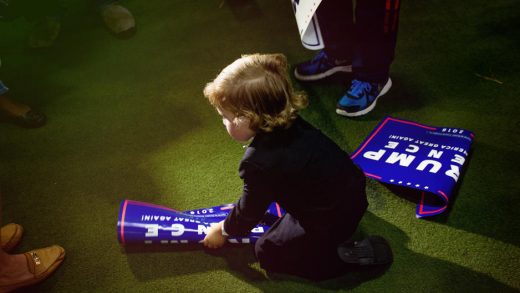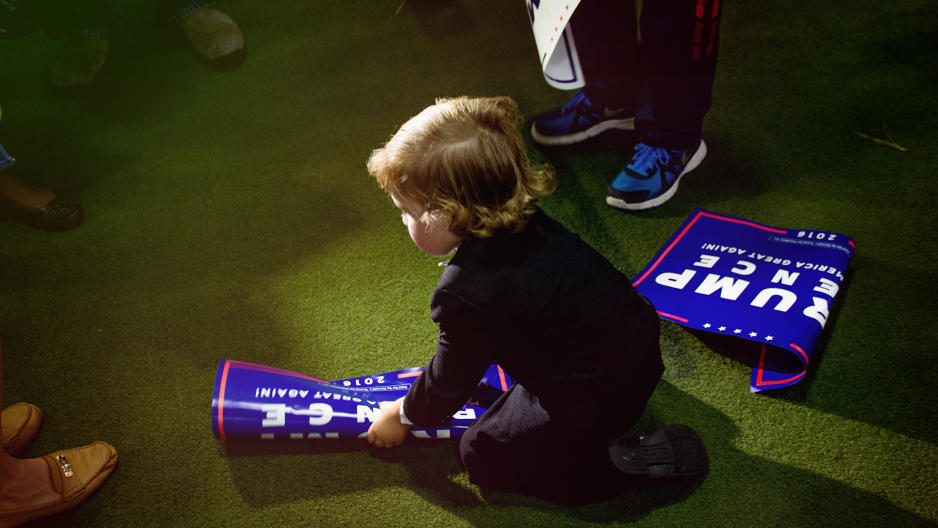How Parents Can Raise Empathetic Leaders In Trump’s America
I’ve never been able to sit through a full episode of The Apprentice. President-Elect Donald Trump’s management and communication style flashes me back to my own three-month stint working with a boss like that. It gives me an instant migraine.
But my own reaction isn’t just a matter of personal preference. The business world is moving decisively toward management models that conflict with Trump’s pugnacious leadership style. Collaboration, active listening, vulnerability, and empathy are all traits companies, recruiters, and hiring managers say they value—and increasingly have a hard time finding.
There are even signs that in many cases, these “soft skills” are outweighing technical expertise, simply because they have a greater net impact. And the balance may tip even more in that direction the further people advance in their careers.
Political beliefs aside, all parents and educators should be able to recognize that Trump’s well-documented leadership style—which includes name calling, racist remarks, and mocking how people look—is a worrying and confusing model for our children. It’s difficult to see as pure coincidence the more than 400 hate crimes that have been reported in the U.S. since Election Day alone, many of them concentrated in schools.
I’m a parent of three, so I’ve been looking for more information on what I can do to help counter the type of attitude that Trump and his backers appear to be modeling. Here are a few methods that may be able to help.
Teach Self-Awareness, Not Certainty
To start, I reached out to speaker and best-selling author Dr. Deepak Chopra for some perspective. His advice: Adults need to teach kids “to reflect on questions such as, ‘Who are my role models—men and women—in public life and among friends and relatives?’ [and] ‘How can I use my strengths to benefit others?'”
Kids don’t need to have answers right away (or ever), Chopra suggested, but they need to practice how to be self-critical. “If we live the questions,” he says, “life will move us into the answers.” Self-awareness takes diligent practice, and its main enemy is certainty.
Supplant Ignorance With Empathy
Like the other skills that comprise emotional intelligence, empathy can be taught.
The day after the election, students at Dewitt Junior High School just outside of Lansing, Michigan, formed a human wall to prevent students of color from getting to class. Some reportedly told a 12-year-old Hispanic student that they intended to “make America great again.”
Researchers who’ve studied racially motivated bullying refer to “circles of concern,” the interpersonal networks that allow us to empathize with others. When kids push others outside their circles, it’s easier to vilify them. “The roots of racism are based on ignorance and misperceptions,” says Alyson Schafer, a parenting expert and author of Honey, I Wrecked the Kids. “To break down a stereotype and alter a child’s perception means giving the child experiences of getting to know real people from various races.”
Parents and educators have a role to play in giving kids exposure to diversity. But it’s not just about instilling an abstract sense of ‘respect’ for others’ differences—kids need to connect with one another on an emotional level, otherwise their circles of concern will remain small and closed off.
“Reading emotional cues, being familiar with the language of emotions, and ‘feeling with’ the other is what empathy is all about,” says Mary Gordon, the founder of the Roots of Empathy classroom program, which has been shown to reduce levels of aggression among schoolchildren. “Parents and teachers have powerful opportunities every day to nurture empathy in children,” says Gordon. “They do this when they interact and speak with others, including the child, in an empathic way.”
Dr. Marc Brackett, deputy director of Yale University’s Health, Emotion, and Behavior Laboratory, has found that this can even extend to how subject matter is presented; it’s not just about firsthand experiences. For instance, when students are taught about Dr. Martin Luther King Jr.’s assassination, Brackett tells Parents.com, discussing the reaction of King’s wife, Coretta Scott King, can help create this level of emotional identification.
Not only does this help children feel emotionally invested in people they may never have met, it also helps them remember what they’re taught. At any rate, it’s these personal stories—whether they’re found in movies, the news, VR experience, or books—that can can help kids identify with multiple perspectives.
Reward Kindness, Not (Just) Good Grades
The tagline of a board game Trump once released was, “It’s not whether you win or lose. It’s whether you win.” This isn’t exactly the attitude that either reduces bullying or leads to effective leadership, Craig and Marc Kielburger pointed out recently in the Huffington Post. They believe parents need to mitigate the impact of a hypercompetitive culture on our children.
“Children should focus on personal goals rather than breaking down others,” they wrote. “Whether they win or lose a game of soccer isn’t as important as developing a skill—like heading the ball or mastering a trick shot.”
Parents are often focused on other things: Will my kid earn the grades to get into a competitive school? Is my child prepared for that next standardized test? That narrow fixation only exacerbates the problem. Instead, ask teachers whether your children are good community members at school. Praise them for expressing gratitude for those who care for them and contribute to others’ lives—not just for doing well on a test.
Kindness—like everything else—takes practice, so look for daily ways for them to contribute. Maybe that’s helping a younger sibling get dressed, caring for a pet, or being a classroom volunteer. Whatever the case, these need to be regular rituals that get acknowledged as such. If they’re just once-in-a-while behaviors that are periodically praised, kids won’t internalize how important they are.
Positive Messages About Girls And Women
I have three boys, and the elder two (ages 7 and 10) followed this election closely. That made me especially concerned about reinforcing more positive messages about girls and women.
Lorna Jones, a 25-year educator and the founder of the Canadian Women’s Foundation’s As We Are Project, a downloadable workshop for combating gender stereotypes, doesn’t suggest censorship. “Foster an awareness of the media influences that surround the children in their lives,” she suggests. You can’t possibly insulate kids from everything that’s out there, Jones believes, but as a parent or teacher, you can help them to interpret it.
“Unless that is done, there is the tendency for children to accept everything they see as the truth,” she explains. “They need to be encouraged to discuss what they see, hear, and read in the media and asked how it makes them feel”—again: emotional education. Jones continues, “They need to be able to challenge the messages that they are given, to recognize and reject stereotypes, and be encouraged to focus on the strengths and qualities that they admire in others and recognize their own positive qualities.”
This is a tall order, to be sure. But it’s about engaging with what adults may rightly find ugly or offensive and then using that as a counterpoint for other, more positive behaviors. Empathy doesn’t emerge from a vacuum.
Model The “Win-Win”
“We have to show our kids that you don’t have to be friends with someone to believe that they deserve to feel safe at school or work—to feel that they belong and matter,” points out Peggy Moss, a former hate-violence prosecutor who now writes and speaks widely about bullying and teasing.
“You only have to believe that you will be happier and more productive in an environment where everyone feels respected and safe.” In other words, you can’t just tell kids that mutual care and concern is a “win-win” situation; they need to see it.
After all, role models can cut both ways. “The people who serve as the guides for our children must set good examples of the behaviors we want them to learn,” says Anna Weiland, head teacher at St. David’s Center for Child & Family Development in Minneapolis. “Children learn by absorbing what they see adults doing. They take what we do seriously, and use it as the model for how a person should be.”
This has long-term consequences, Weiland points out. “If the behaviors they see are negative, and especially if those negative behaviors are encouraged, they will absorb and use them. And the older they get, the harder it is to rectify.” Gordon agrees. “When children experience the adults that they love and respect treating others empathically, this experience becomes biologically embedded in the children’s brains,” she says.
Finally, it’s worth remembering that kids learn empathy when their own emotional needs are being met at home. When they know they can count on their caregivers for emotional and physical support, they’re more likely to show those same behaviors to others they see in distress. Trump will keep doing what he’s doing. It’s up to parents, teachers, and other role models to balance things out; we need to keep doing what we’re doing, so kids can do the right thing.
Fast Company , Read Full Story
(44)














